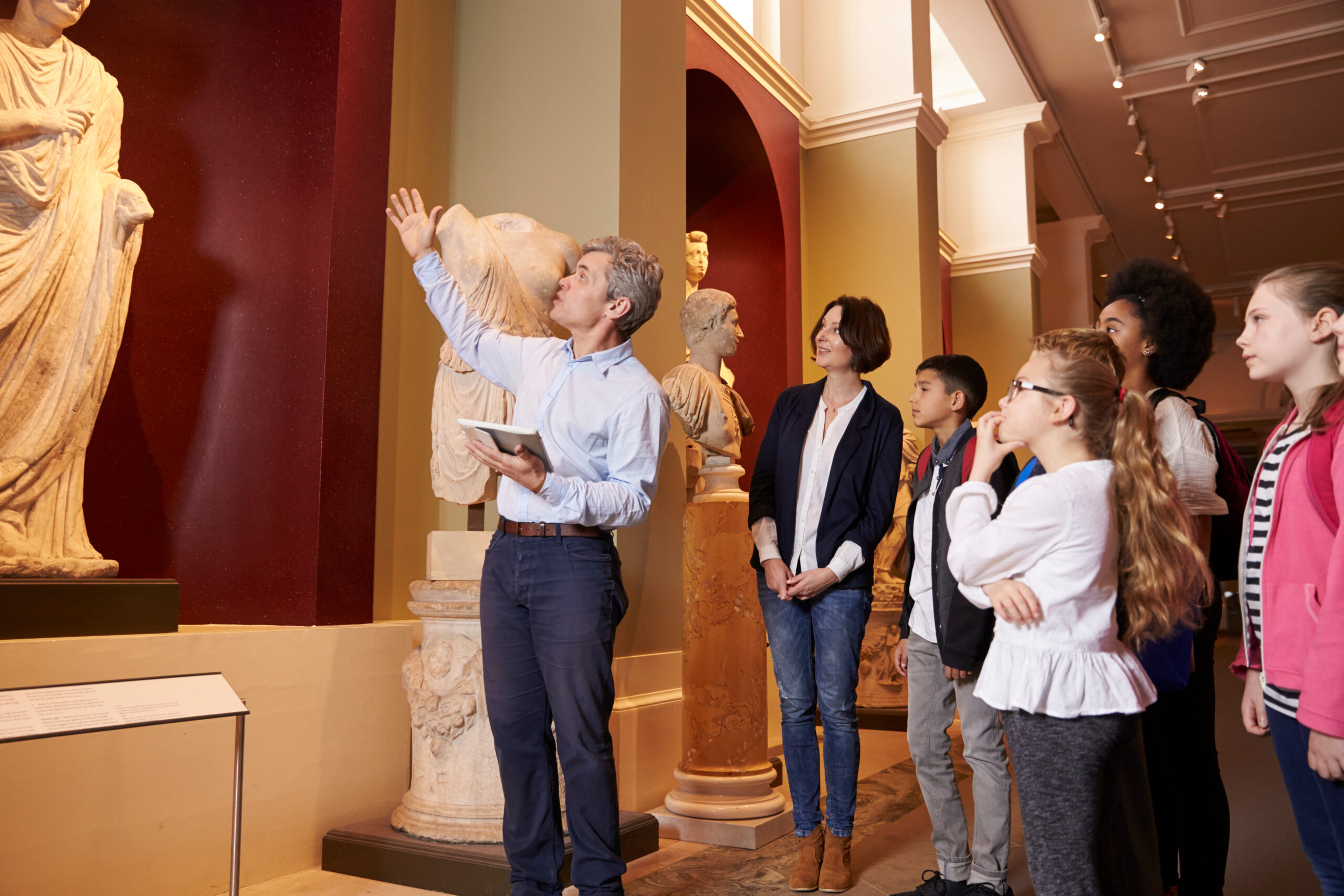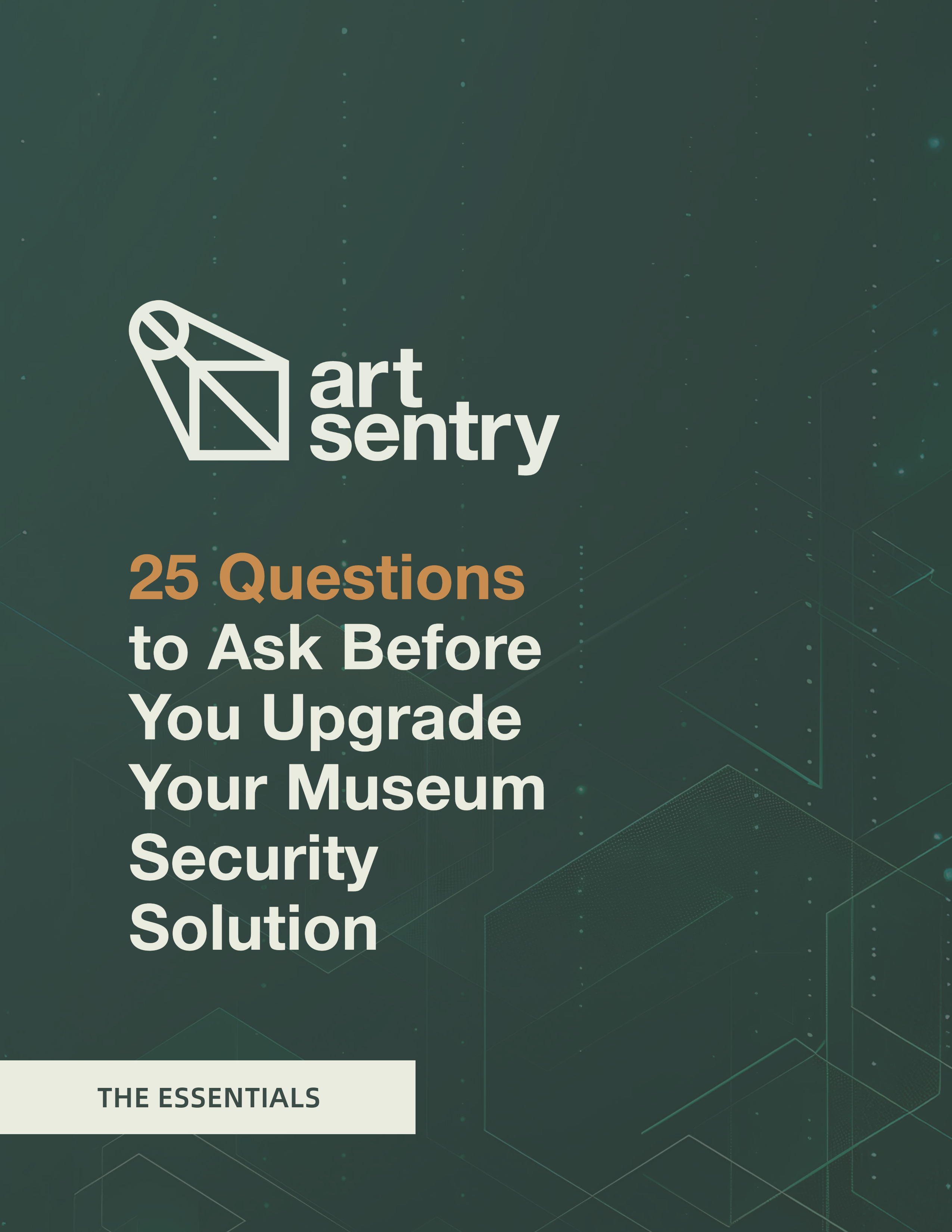Did you know one negative interaction can change a visitor’s entire view of your museum?
A recent survey conducted by the American Alliance of Museums reveals some enlightening insights into how museum visitors perceive their experiences. Even a small number of negative visitor experiences can cast a long shadow over a museum’s reputation. For most visitors every interaction shapes their perception of the museum. Positive encounters enhance a visit, promoting loyalty and engagement, while negative experiences can result in dissatisfaction and potentially harmful reviews. This highlights the crucial importance of the visitor experience.
According to the 2024 Annual Survey of Museum-Goers, only 3% of respondents reported issues with staff, describing interactions as rude, inattentive, or unfriendly. While this is a small number, visitors who have negative experiences are nine times more likely to discuss their visit or leave a review compared to those with positive or neutral experiences. This amplifies the impact of these interactions on public perception, making it crucial for museums to promptly and effectively address potential visitor concerns.
Compared to those with positive experiences, dissatisfied visitors were:
- 60% more likely to be people of color
- 70% more likely to be parents/guardians of small children
- 29 times more likely to say the museum “doesn’t do anything well”
- 2.5 times more likely to criticize exhibitions
- 3 times more likely to mention high costs as a barrier
- 3 times more likely to feel museums are “outdated”
Interestingly, many dissatisfied visitors still feel passionate about museums, often visiting for their children’s learning experiences. However, negative interactions can overshadow their overall experience, showing how one bad encounter can heavily influence perceptions.
By contrast, respondents who praised the museum for being welcoming and engaging were more involved and frequent visitors. These individuals generally find museums enjoyable and view them as valuable community assets, demonstrating how positive interactions foster a virtuous cycle of engagement and satisfaction.
For the two-thirds of respondents who expressed neutral opinions about staff interactions, this likely indicates experiences that were neither memorable nor noteworthy. This segment is less engaged overall. Their connection has the potential to grow with more personalized, positive interactions.
Museums can take several practical steps to improve visitor experience and minimize the risk of negative encounters:
Family Friendly Spaces
Many dissatisfied respondents were parents or guardians of young children. Museums can address this by creating family-friendly zones and interactive exhibits that engage children, and by training frontline staff to recognize developmentally appropriate behaviors for different age groups. When staff understand children’s behavior, they are better able to enforce rules with compassion, making visits less stressful for parents and enhancing their overall experience.
Camera-Based Surveillance
Surveillance cameras allow staff to monitor visitor flow, address congestion, and identify potential issues proactively. This helps staff respond discreetly to situations without disrupting visitors, enhancing security while reducing unnecessary interventions. By creating a more seamless experience, this technology can reduce stress on both staff and visitors, leading to a more welcoming atmosphere.
Clear Signage and Wayfinding
Well-designed signage helps visitors navigate the museum independently, minimizing confusion and frustration. By helping visitors feel more confident in their surroundings, clear wayfinding reduces reliance on staff for basic inquiries, allowing for smoother, more self-guided visits.
Enhanced Visitor Services
Providing well-trained frontline staff who can assist with everything from basic information to specialized guidance creates a welcoming environment. Museums that hire for attitude and provide ongoing training ensure that all visitors feel valued and understood.
Although staff interactions are only one part of the museum visit, they have an outsized effect on visitor experience. Addressing concerns, supporting staff, and implementing tools like surveillance and signage can help visitors feel more welcome, secure, and inspired to return.
References
Wilkening, S. (2024, October 18). The influence of staff on museum engagement and visitation: A 2024 annual survey of museum-goers data story. American Alliance of Museums. https://www.aam-us.org/2024/10/18/the-influence-of-staff-on-museum-engagement-and-visitation-a-2024-annual-survey-of-museum-goers-data-story





